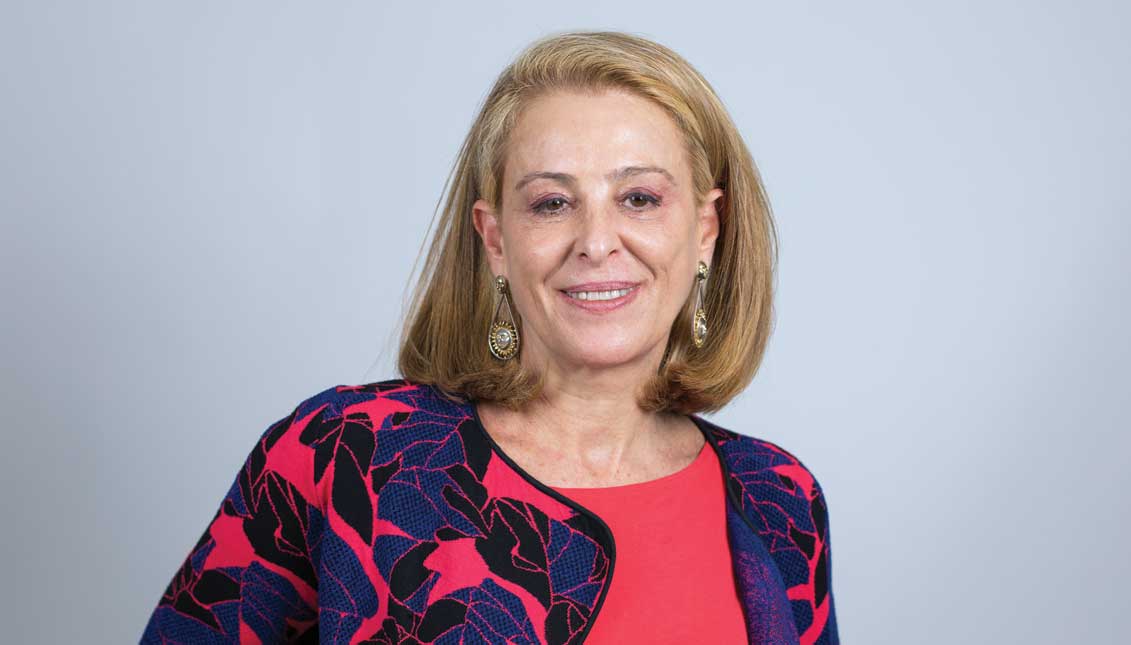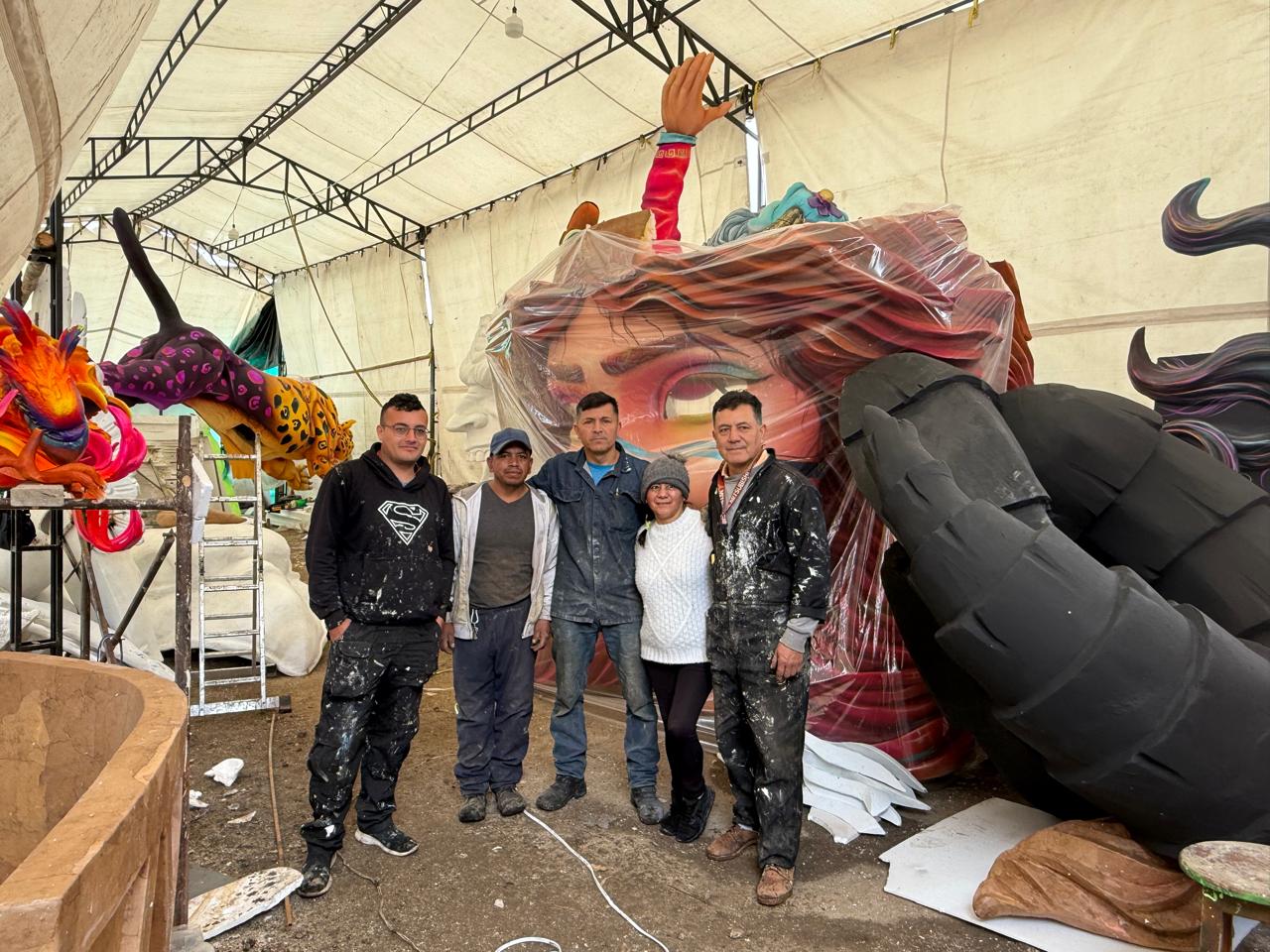
“Beyond border-crossing”: The chronicler of Mexamérica
In a talk with AL DÍA News, journalist and academic Fey Berman spoke about her new book and the immigrant past of her family — including the story of her…
Human being, Jewish, writer, mother, wife, Mexamerican. All of these are words chosen by Fey Berman to describe herself, but only the last one both forms an essential part of her individual identity and also represents a sociocultural phenomenon which is the subject of Berman’s recent book, Mexamérica: Una cultura naciendo.
For Fey Berman, journalist by profession, it has never been a problem to hold within herself and recognize diverse identities — beginning with just her name, which most people do not usually associate with that of a Mexican or Mexamerican person.
Berman’s last name is Jewish, she explained, and is in some ways a testimony to the trials her parents faced as they fled to Mexico to escape Nazism in Poland. Berman’s mother fled Poland as a young girl, and later met Berman’s father in Mexico after he had emigrated from Poland due to the fact that at that time Jewish people were not banned from attending all Polish universities.
“For [my parents], Mexico didn’t mean anything. My grandfather learned something about the country reading a book of questions and answers in Spanish on the boat. They went to Mexico because my grandfather had a brother in the United States who was working at the World Fair in Chicago, and he was able to book passages in order to take his six nieces and nephews away from Poland — he didn’t want to leave them behind. At the time, Poland had already been invaded, and there was no way to obtain passports,” said Berman.
To stay in Poland under the Nazi invasion would indeed have been a death sentence: approximately three million Polish Jews were murdered by the Nazis from 1939 until 1945, when the country was liberated by the Allied Forces.
Berman said that her grandparents, her mother, and the rest of the children lived in Mexico for ten years or so without documents, because “it also wasn’t easy to be naturalized there.”
Despite the fact that they were first-generation immigrants, Berman said her parents are now “completely integrated in Mexico,” acknowledging that everything she learned about Mexican art was thanks to her mother, who is not only an admirer of the work of many Mexican artists, but also calls many of them her friends.
Berman decided, though, to explore another life beyond the borders where she was born and raised, and so she moved to New York in 1981 to continue her studies in both economics and dance. In time she began to focus solely on her academic work, receiving her master’s and doctorate of Arts from New York University. Although her immigration was distinct from the immigration story of her parents, Berman recognized that her knowledge of her parents’ experiences had created within her a capacity for the empathy necessary to both understand and tell the stories of other Latin American immigrants who have come to the U.S. to build their lives.
The presence of “Mexamericans” in the U.S. has increased and has spread out throughout the U.S., said Berman, to the point now where “we are everywhere,” she said.
RELATED CONTENT
“The overwhelming majority have papers, or were born here, so we’re talking about a population that is already here to stay,” she continued. “It’s a permanent diaspora. They’re not going to leave, and there aren’t going to be deportations because there isn’t a way to deport them.”
In this way, said the author, in order to balance the immigration debate the immense diversity of the Mexamerican population must be taken into account.
“I think that it’s very important to keep talking about the situation of undocumented immigrants, to talk about how to regularize their situation, but if we don’t talk about the enormous diversity that exists in the Latino population, we’re always going to be the scapegoats, because the caricature will prevail that the only thing that we’re good for is for picking tomatoes,” she noted.
According to Berman, the Jewish immigrants that arrived to the U.S. were able to integrate themselves more quickly into U.S. society because they “have five thousand years of practice” in struggling to survive in different places as foreigners, given that they have been expelled from countries time and again, forced to carry their home, their culture, and their identity with them through these trials, preserving these in spite of the persecution and violence that they have suffered.
“What the Jewish community has achieved at the global level and within the United States is the ability to maintain and fortify connections within their community,” allowing them to construct a complete support network, said Berman, adding that the Latino community in the U.S. can learn from this example to start to develop their own capacity for organizing and advocating for themselves as a unified community.
“Mexamerica goes beyond border-crossing. We have a culture that defines us and that enriches the North American culture, and that consists in a lot more than just tacos and mariachis. It goes beyond folklore,” Berman stated, citing the many Mexamericans profiled in her book who have found success on both sides of the border, contributing their talents as musicians, scientists, visual artists, politicians, doctors, and more.
One of the Mexamericans that Bergman mentions in her book is the artist Martín Ramírez. For the author, Ramírez’s work represents the same fusion of cultures and perspectives that she wanted to articulate through her compilation of writings and profiles in her book. She wanted to transmit the idea of synergy between two cultures — Mexican and American — to give shape to something new and present an original perspective about the experiences that Mexamericans are living in communities on both sides of the border.
If Ramírez, with his “intimate portraits of suffering and humiliation of those men and women expelled from Mexico by misfortune” is in fact the “portraitist of our exile” — as Berman describes in her book —, then perhaps Berman herself could also be seen as a portraitist, a chronicler of those that belong to this new, uncharted territory of Mexamerica as it exists today and onwards.











LEAVE A COMMENT: